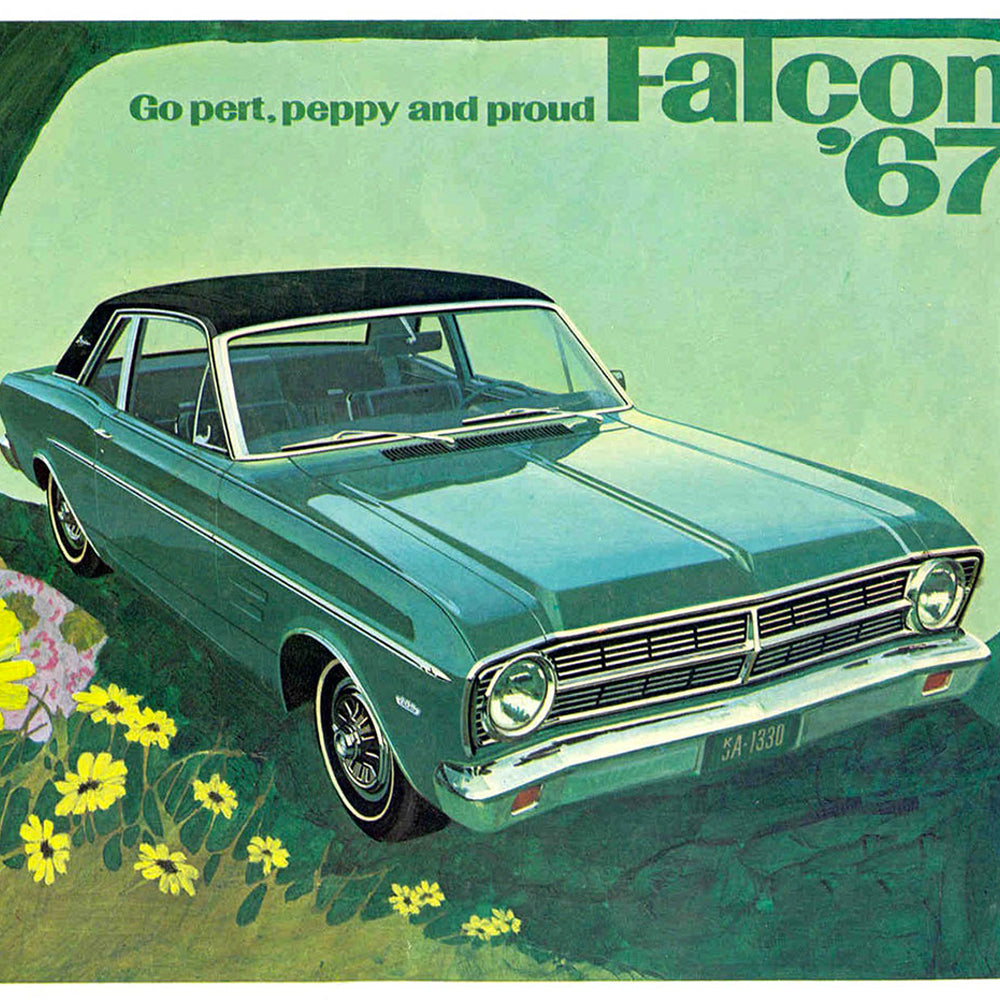
In sharp contrast to the majority of ads that Ford was running concurrently and just prior, these Falcon ads have a strong illustrative quality intended to speak to the period’s arts and crafts revival and growing nature-based environmental consciousness and connection.
This approach is not surprising when taken in context, as the Falcon was one of Ford’s more basic cars. In some ways these advertisements tell the story of the coming cultural upheaval throughout Western society. The Falcon was not going to be sold to the wealthy, well-entrenched few. Hence, the ads used to sell it needed to speak to the needs and wants of as many people as possible.
Interestingly, it seems that Ford was targeting women more than men, as many of the images portray women more realistically than many other period advertisements (that usually show women gazing longing at the viewer). However, we can’t help but wonder how successful these ads were in luring women as we suspect the old adage “you can sell a young man’s car to an old man” but not vice versa, applies to women too. No one wants to drive something cutesy.
Regardless, these ads somehow manage to look simultaneously modern and retro (before retro was even a thing) while eschewing the polished photographic trend of the era. Additionally, while they seek to highlight the cars’ usefulness, they point to the younger population’s growing weariness and awareness of slick advertising designed solely to move products.






Image Source: oldcarbrochures.com




















































